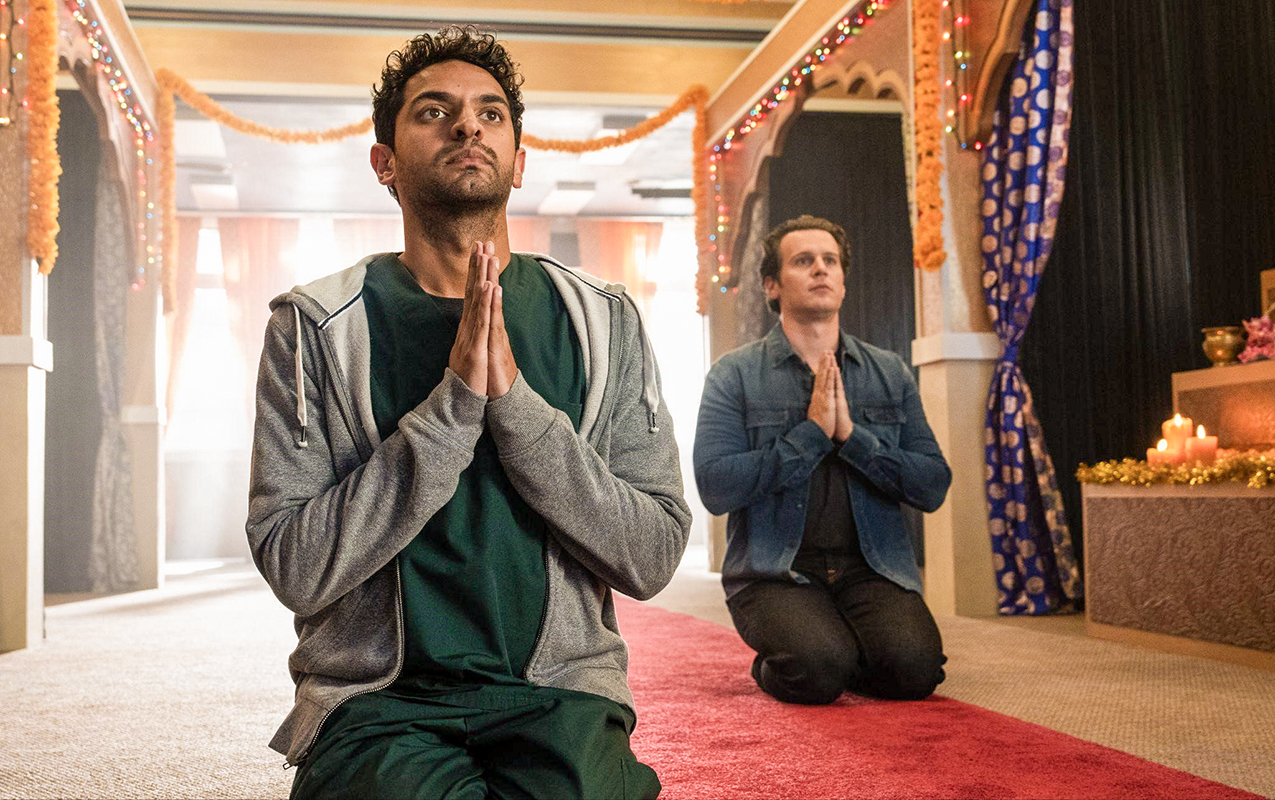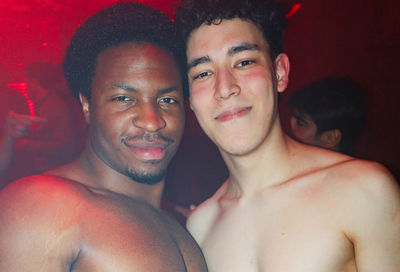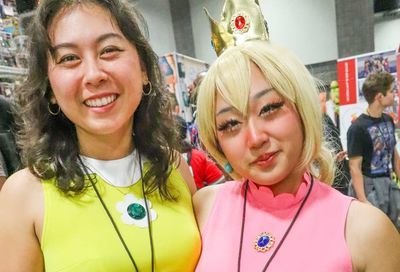A Homo Haunting
Gay pagans pull from the past for Samhain
There are any number of icons that pop up at Halloween. Skeletons, jack-o-lanterns, ghosts and witches readily come to mind. And though none is particularly gay in its own right, the costumed festivity of Halloween has been adopted heartily by the gay community. After annual Pride celebrations, Halloween may be seen as one of the gay community’s most revered occasions.
For many, the holiday is an excuse for drag. For other creative queers, it’s an opportunity to let one’s imagination play and create a fabulous costume. For most, it’s time for a party.
But despite the modern trappings of bite-sized candies and naughty-French-maid costumes, there are traditionalists in the gay community — and beyond — who are sticking to a more formal interpretation of this autumnal interlude between the lazy days of summer and the chill to come.
”It’s a Celtic tradition,” explains Eric Riley, referring to Samhain — pronounced ”sow-en.” As a member of the D.C. Radical Faeries, it’s the name Riley recognizes for what the rest of us call Halloween.
”It’s one of eight traditional holidays from the British Isles,” he says. ”This particular celebration is the ‘harvest of the flesh.’ After your grain and fruit, this is the time that you’d be butchering animals. It is, in fact, the original Halloween.”
As with many annual celebrations, Halloween finds its roots in agricultural cycles and has been adapted to suit modern mores. The modern world is, however, surprisingly close to the ancient world. Halloween’s telltale witches, for example, are not grizzled cartoons with pointy hats living solely in fairytales. Contemporary witches are here, some are queer, and they often celebrate Samhain. But the modern gay witch or warlock isn’t much like Bewitched‘s Uncle Arthur. Rather, witches and warlocks today are part of the panoply of ”Neopaganism,” which can include Wicca and Shamanism as religions, ”magick” as a craft, and even the gay Radical Faeries. Just for starters.
”For me, this is my primary spiritual community,” says Riley, who describes his upbringing as ”open-mindedly agnostic,” adding that he explored a number of Christian faiths before arriving at the spiritual home he’s found today. ”In the mid ’90s I really started to warm up to the idea of paganism. It started with Wicca, but morphed into something more eclectic. It’s something innate in you. I’ve always been this sort of hippy, crunchy, pagan person.”
The community Riley found is an offshoot of the initial Radical Faerie gathering formed by gay-rights pioneer Harry Hay and others in 1979. Although the Faeries were founded as to foster ”queer” spirituality, Riley says the group is a mix of religious Neopagans and those simply looking for a way to express a counter-cultural identity. Gay Neopagans, however, are not bound to the Faeries.
Michael Walker is a modern-day, gay shaman. Following his upbringing in the Lutheran and Presbyterian churches, Walker says he left organized religion when he was 18. Now 54, he says he began earnestly searching for a new spiritual identity in recent years. That search led him to Native American spirituality, gay spiritual retreats, and finally Shamanism.
”At first it seemed far-out to me,” says Walker, referring to the rattles and drums often used in shaman rituals. ”It didn’t resonate with me. I just thought it was goofy. But that was my own ego…. My religion was very male-oriented when I was growing up. When I discovered Shamanism, I became more familiar with female energies. I used to be really hard on myself. My higher power was a ‘Christian old man with a white beard’ sort of character. Now I have the Goddess at the top. The Goddess is nurturing, understanding, compassionate — and maybe even more powerful.”
As Walker is new to Shamanism, he says he’s unfamiliar with Samhain. Nor does he harbor any particular reverence for Halloween. He says, however, that he’s trying to expand his Neopagan network through a Web site called ”the Witches’ Voice” (www.WitchVox.com).
Many local members of this on-line community will likely be found Saturday, Oct. 28, celebrating Samhain with drumming at the Jefferson Memorial from 8 p.m. to midnight. Riley says he’ll certainly be there. Still, the D.C. Radical Faeries are saving their signature Samhain celebration for Monday, Oct. 30.
”We usually start with an ancestral feast,” explains Riley, whose Faerie nickname is ”Fritter” in honor of a sunburn he suffered after an afternoon offering ”crotch blessings” at the Faeries’s booth at Capital Pride. ”We have dishes associated with the past, like old family recipes. I usually bring green beans with bacon. It’s one of the things my grandmother always made.”
This harkening to the past — to the dead, in particular — honors a Samhain belief that this time of year, marked by the slaughter of livestock, is a time when the line between the living and the dead is particularly thin. Even the attendant bonfire comes from the term used to describe the fire on which these ancient Celts threw the bones of the slaughtered animals, thus ”bone fire.”
”We’ll usually have a bonfire, and we’ll take a moment to honor the dead, to say their names and remember their lives,” Riley continues. ”It’s kind of a new-year celebration, and everyone pulls a tarot card. One of the final things we’ll be doing is letting go of the past. This is a transitional moment between life and death. We burn away elements from the past. We write things down and throw them into the fire with great pomp and ceremony.”
Riley says that though this is the most somber of the Faeries’s handful of annual events, it nevertheless maintains a gay sensibility — and lots of glitter.
”We always tend to party a little,” he says with a laugh. ”It’s not all somber. One year, I did a tribute to [lyricist Fred] Ebb. I dressed like Liza Minnelli and sang ‘Cabaret.”’
The Faeries’s Samhain ceremony and potluck is free and open to the public, and Riley promises that unlike many ceremonies offered in more traditional religious settings, newcomers needn’t worry about learning any Faerie conventions. The only rote chant offered, he says, will be the local Faeries communal farewell: ”Merry Meet. Merry Part. Mary Tyler Moore!”
For more information about Samhain Drumming at the Jefferson Memorial, visit The Open Hearth Foundation at www.openhearth.org.
The D.C. Radical Faeries Samhain celebration and potluck will be held Monday, Oct. 30, at 7:30 p.m., at 306 Carroll St. NW. For more information visit the Faeries at www.dcradfeys.org.
Support Metro Weekly’s Journalism
These are challenging times for news organizations. And yet it’s crucial we stay active and provide vital resources and information to both our local readers and the world. So won’t you please take a moment and consider supporting Metro Weekly with a membership? For as little as $5 a month, you can help ensure Metro Weekly magazine and MetroWeekly.com remain free, viable resources as we provide the best, most diverse, culturally-resonant LGBTQ coverage in both the D.C. region and around the world. Memberships come with exclusive perks and discounts, your own personal digital delivery of each week’s magazine (and an archive), access to our Member's Lounge when it launches this fall, and exclusive members-only items like Metro Weekly Membership Mugs and Tote Bags! Check out all our membership levels here and please join us today!



















